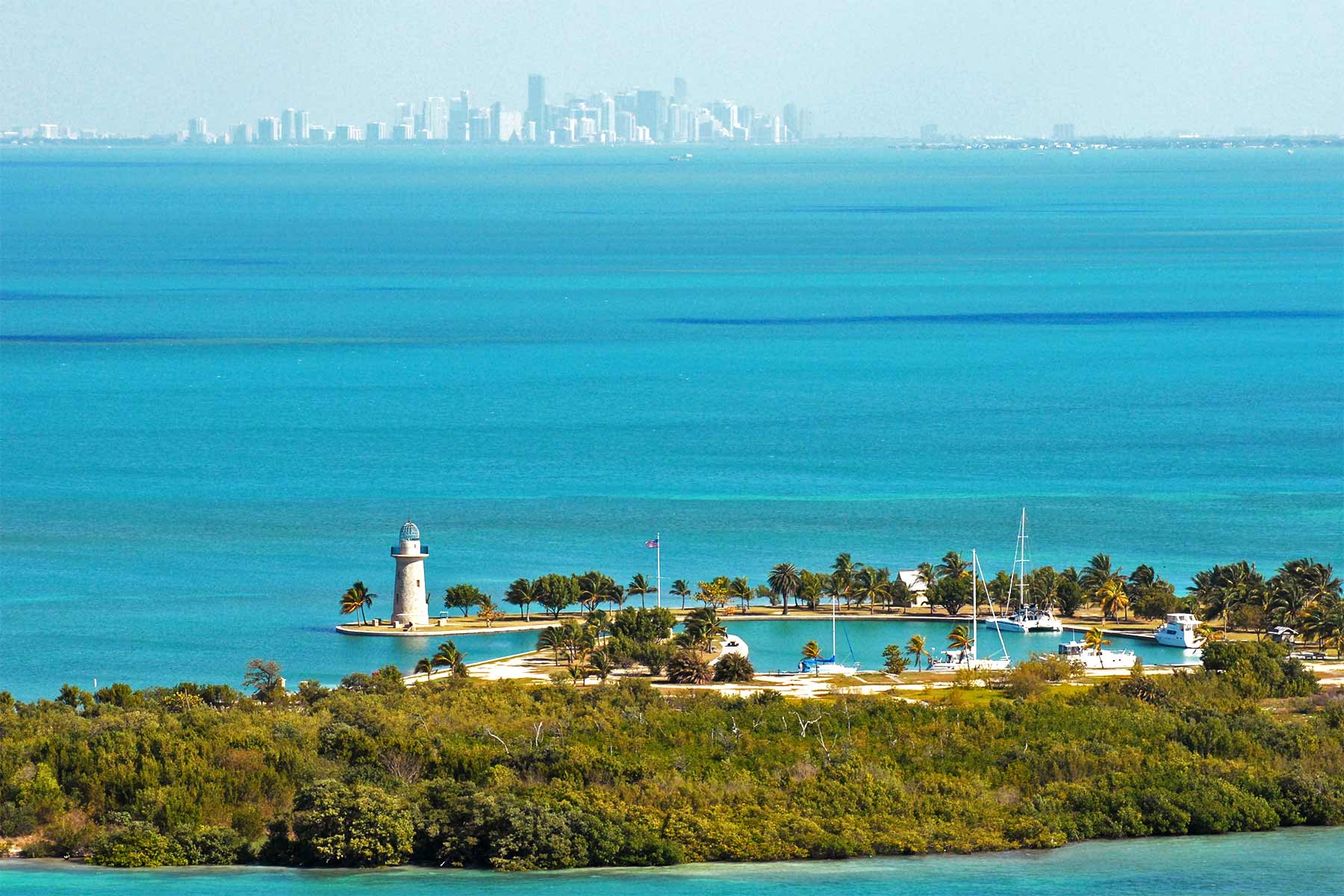
Article Overview: Things to Do in Biscayne National Park
Set on the far southeastern fringe of Florida, Biscayne National Park covers some 173,000 acres—more than 95 percent of them of the watery variety. It encompasses the southern sector of spectacular Biscayne Bay, that shallow, shimmery “front yard” of Greater Miami, plus part of the Atlantic beyond, floored by an extensive section of the Great Florida Reef, among the foremost ecological treasures of the U.S.
Terra firma is decidedly limited here, but what there is—a narrow section of the Florida mainland coast as well as the northernmost isles of the Florida Keys—is seductive, what with the jungly mangroves and rustling palms.
Biscayne’s a linchpin of South Florida’s surprisingly extensive swath of National Park Service-managed land. Back in the day—before all the dredging and development that transformed the vast subtropical wilderness—Biscayne Bay was intimately connected to the Everglades watershed, with “transverse glades” out of the giant marshland to the west draining into here through cuts in the Miami Rock Ridge.
That ancient linkage makes a double-header tour of both Everglades and Biscayne national parks—just a stone’s throw from one another—especially poignant.
In this guide, we’ve wrangled together 15 amazing things to do in Biscayne National Park, which is one of those few units of the National Park System that really requires boat access to fully appreciate.
Ready to get started? Let’s go!
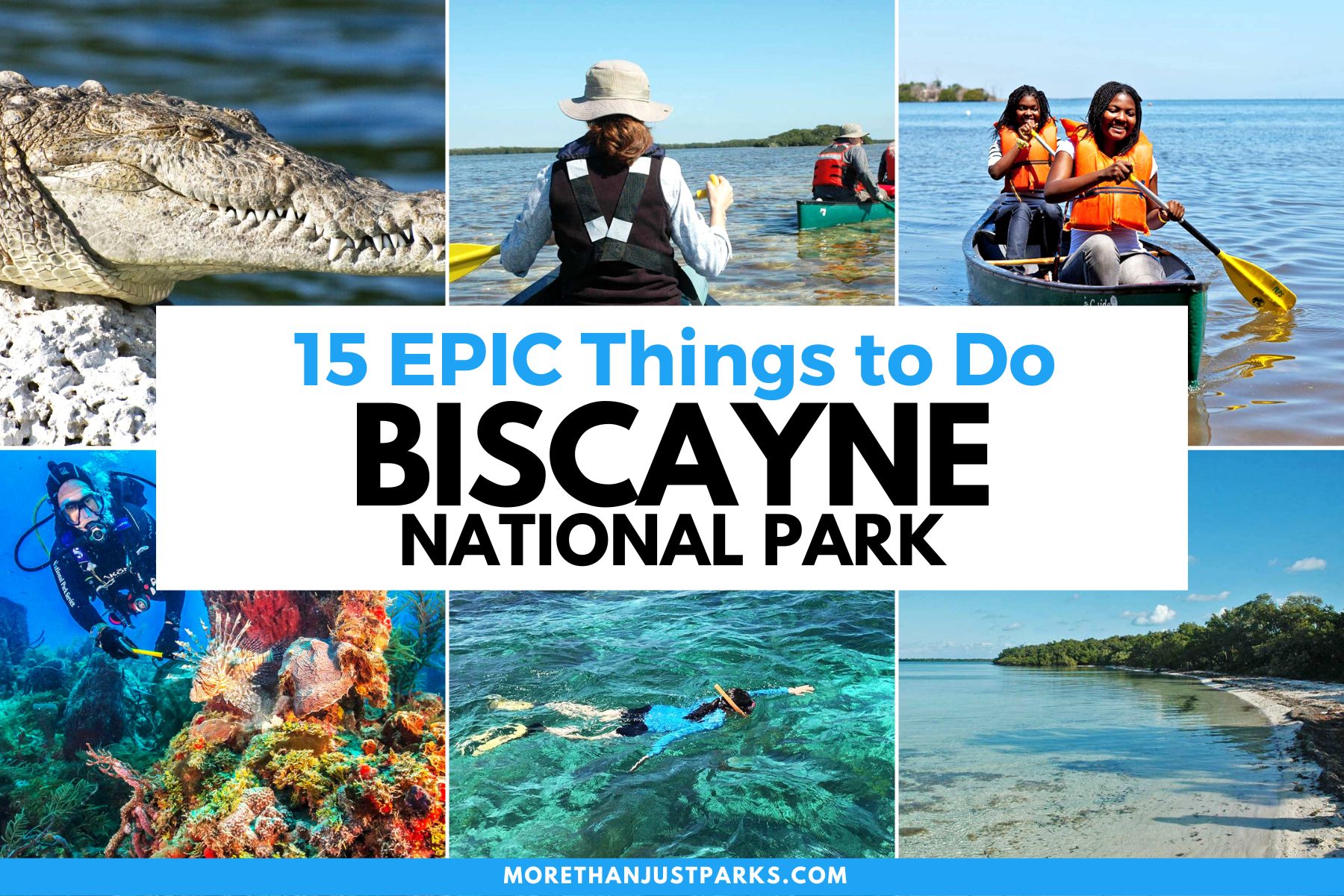
Things to Do in Biscayne National Park
Table of Contents: Things to Do in Biscayne National Park
Table of Contents: Things to Do in Biscayne National Park
- Why Trust Us About the Best Things to Do in Biscayne National Park?
- Things to Know Before You Visit Biscayne National Park
- Where to Stay at Biscayne National Park
- Top 15 Things to Do in Biscayne National Park
- Top 10 Things to Do in Biscayne National Park
- Top 5 Things to Do in Biscayne National Park
- Map of Things to Do in Biscayne National Park
- Summary of Things to Do in Biscayne National Park
Why Trust Us About the Best Things to Do in Biscayne National Park?
We’re Will Pattiz and Jim Pattiz, collectively known as the Pattiz Brothers (and sometimes the Parks Brothers) and we absolutely LOVE the national parks.
We’ve worked with the National Park Service, the Department of Interior, USDA, and the U.S. Forest Service for years creating films on important places and issues. Our work has been featured in leading publications all over the world and even some people outside of our immediate family call us experts on the national parks.
Our goal here at More Than Just Parks is to share the beauty of America’s national parks and public lands through stunning short films in an effort to get Americans and the world to see the true value in land conservation.
If you’d like to follow along our journey we’d be delighted to have you!

Things to Know Before You Visit Biscayne National Park
Entrance Fees
$15 per vehicle OR if you plan to visit more National Parks within the next 12 months I suggest you go ahead and purchase the America the Beautiful Pass (which can be found at the entrance gates to most national parks). This pass gets you into all National Parks, Forests, Monuments, and more including 2,000 sites for free after a one time $79 fee.
Sunscreen
Use it. Lots of it. Especially this one which I never leave the house without because it plays nice with our dear friend, earth 🙂
Insect Repellent
If you’re looking for a good insect repellent that plays nice with our good friend earth, we recommend this one or this one if you’re a DEET person.
Guide Book
The Best Guide Book for Biscayne National Park is this one which we’ve marked up and highlighted quite a bit.
National Parks Map
National Parks Checklist Map: This beautiful National Parks Checklist Map can be ordered to your house.
Framed National Parks Map: We’re a sucker for maps, this framed national parks map is the best.
Where to Stay at Biscayne National Park
Planning a trip to Biscayne and haven’t booked accommodations yet? This is our favorite hotel for Biscayne National Park.
Top 15 Things to Do in Biscayne National Park
15. Take in the Visitor Center
Too obvious? We don’t think so: A surprising number of folks touring national parks skip visitor centers, maybe deeming them too boring (or maybe themselves too cool?). That’s a shame, because these hubs really do serve as excellent gateways to these incredible public lands. Biscayne’s is definitely no exception, orienting visitors to the layout—and the preciousness—of this subtropical wonderland.
We’re talking the Dante Fascell Visitor Center, to be specific, which sits on the park’s narrow mainland portion at Convoy Point. Within, you’ll find a well-arranged and information-packed museum showcasing the four big-time ecological realms of Biscayne: the Great Florida Reef, Biscayne Bay, the far northern Florida Keys, and the mainland’s mangrove seaboard.
There’s also an art gallery celebrating the works of local artists—a cool feature you might not expect in a park visitor center, and one highlighting a somewhat less-tangible value of America’s national parks: their inspirational and stimulating effect on mind and heart alike.
Sparing an hour or so for the visitor center is one of the best things to do in Biscayne National Park, particularly for a first-timer here.
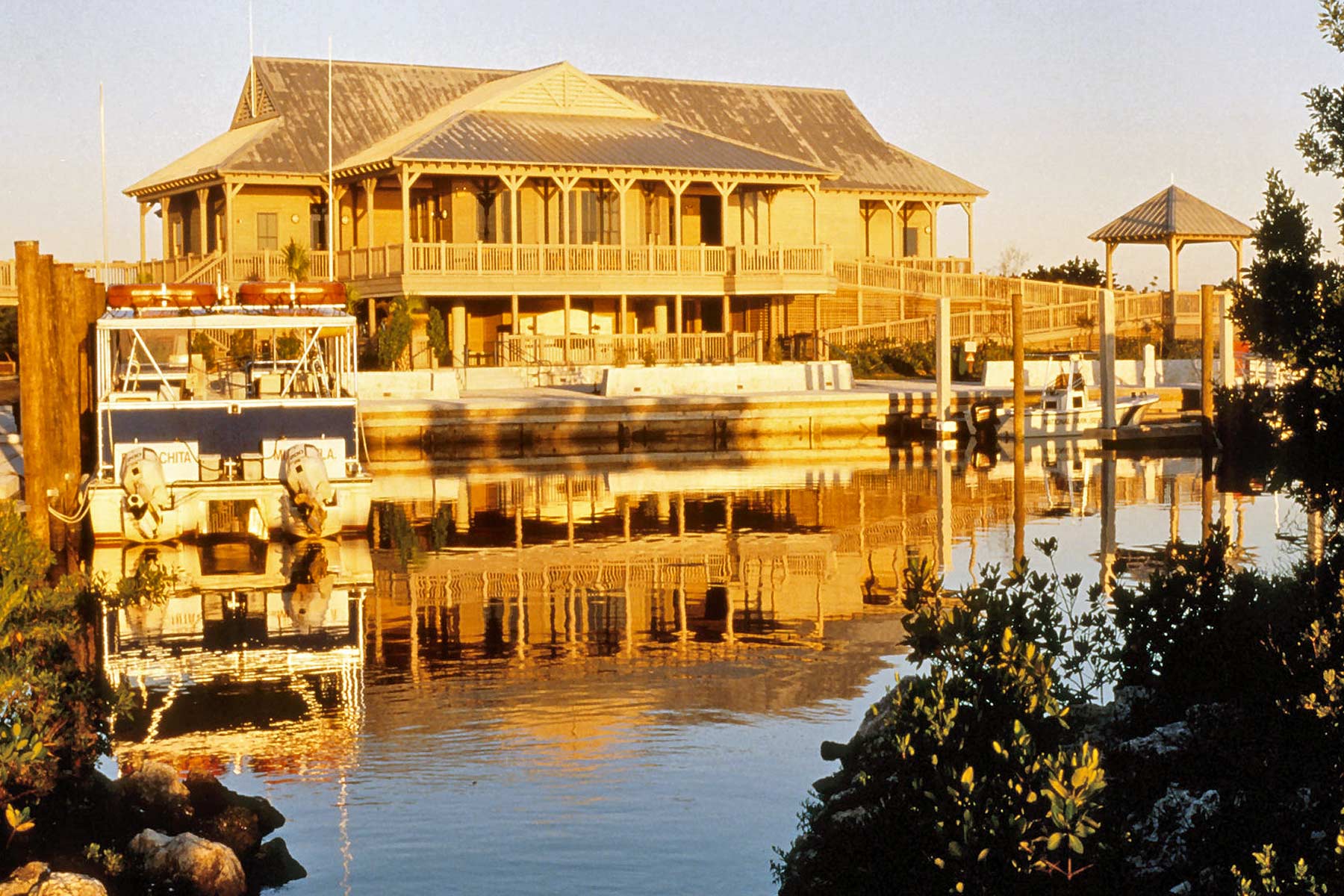
14. Spy an American Crocodile
Among the most spectacular—and geographically restricted—big predators in the U.S., the American crocodile reaches the northernmost limit of its mainly tropical range in South Florida. (That said, stragglers sometimes show up along the Atlantic coast farther north—even up into the Carolinas.)
One of the most exhilarating things to do in Biscayne National Park is clapping eyes on this magnificently gnarly reptile, mainly associated with brackish estuarine and nearshore waters.
American crocs actually rank among the heftiest crocodilians in the world: While most are on the order of eight to 15 feet, exceptional specimens may reach 20 feet. Yet they’re generally much less aggressive than their most notorious Old World relatives, namely the saltwater croc of the Indo-Pacific and the Nile croc of Africa.
Biscayne Bay is roughly the northern limit of regular crocodile digs on Florida’s Atlantic coast, and they’re not uncommon in Biscayne National Park. But these shy, ash-colored beasts—distinguished from their predominantly freshwater cousin, the American alligator, by their proportionately longer, narrower, and more conspicuously toothy schnozzes—aren’t all that easy to see.
Spend some time along the park’s mainland shore front, on foot or in a kayak, and you might luck out spotting a basking saurian, or perhaps one poised at the surface up against the mangrove roots. Hopefully we don’t have to emphasize to admire these awesome creatures from a distance!
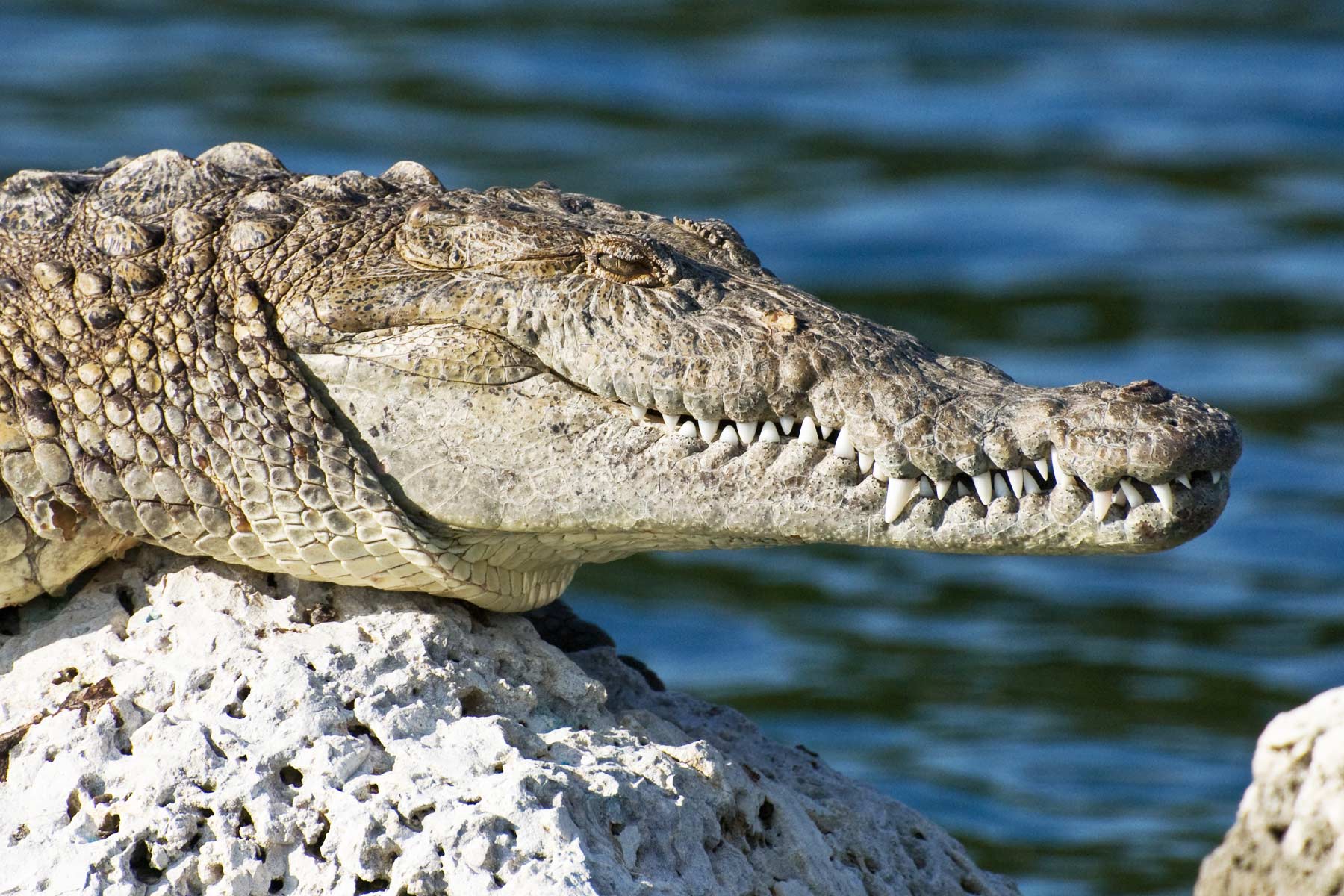
13. Cast for Saltwater Trophies
Biscayne Bay ranks among Florida’s most famous fishing destinations, and much of the liquid acreage of Biscayne National Park is open to angling (for those with a valid Florida fishing license, natch).
You can stalk a wide variety of prized saltwater species among Biscayne’s seagrass beds and mudflats. Bonefishing has historically been on the legendary side, with some real bruisers following the tides. In spring especially, Biscayne Bay anglers also have a decent shot of doing battle against one of the world’s hardest-fighting gamefish: tarpon, those titanic “silver kings.” Permit are also among the stars of the Biscayne show, with a whole slew of supporting players as well: from snook to mangrove snappers.
Pursued anywhere from the Black Point Jetty to the margins of the Featherbed Banks (which roughly separate the central and southern portions of Biscayne Bay), sportfishing is one of the most thrilling things to do in Biscayne National Park.
Just remember to abide by fishing regulations when casting here: both the state laws and Biscayne’s, which dictate where and how you can fish and which species are off-limits (including goliath and Nassau groupers and sawfish, among others).

12. Arr, Matey: Dig Into Biscayne’s Pirate History
Biscayne National Park’s got plenty of fascinating history, stretching back millennia to the coastal lifeways of the native Tequesta people. The park comes drenched in pirate lore, and, if you ask us, it’s impossible to resist. That’s especially true when it comes to the most famous buccaneer around these parts: Black Caesar.
It’s impossible to sort fiction from fact when it comes to this Biscayne icon of the early 18th century, but it’s worth sketching out the basics of his legend. One principal storyline attests Black Caesar was a West African chieftain who, along with some of his men, was tricked aboard a slave ship and hauled across the Atlantic.
A hurricane destroyed the ship, and Black Caesar (along with a sailor he’d befriended) managed to escape to the wilderness coast of South Florida. There, frequently operating out of Biscayne’s mangrove backwaters and keys, he pursued a piracy career: marauding merchant vessels, stashing treasure, and (so they say) dispatching of prisoners by tying them up and letting the incoming tide drown ‘em. He eventually ended up serving in the crew of none other than Edward Teach (Thatch), aka Blackbeard.
Tracing Black Caesar’s mythic geography is one of the more engrossing things to do in Biscayne National Park. Visit Elliott Key, where lore maintains he would stockpile loot, and steer your way through the channel off its southern shore, now called Caesar Creek on account of being a reputed Black Caesar hideout (and hosting Caesar Rock, where the pirate captain would allegedly anchor).
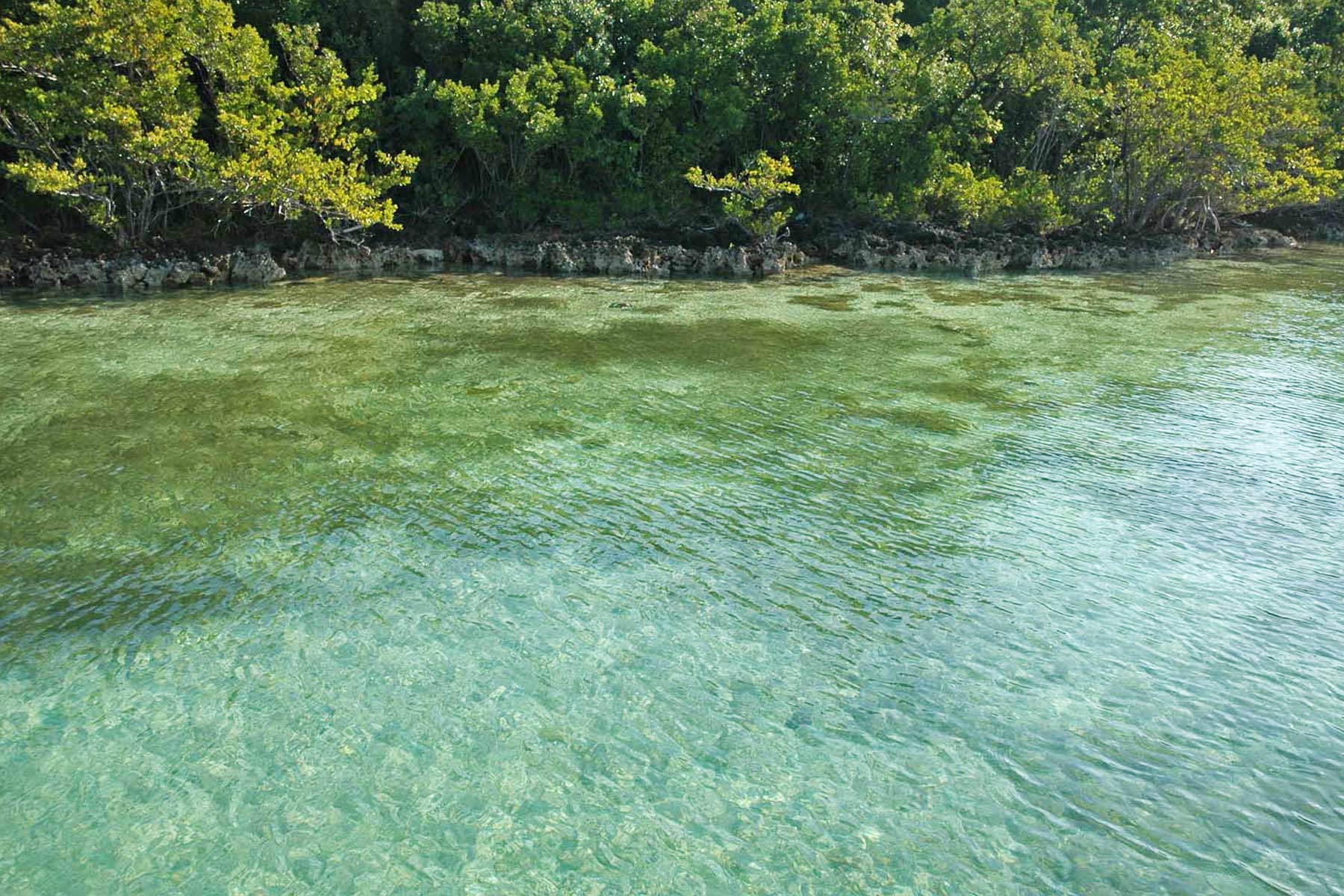
11. Revel in the Plant Diversity
From gumbo-limbos, royal palms, sea-grapes, and Florida Keys blackbeads to the nasty poisonwood and even nastier manchineel, Biscayne’s coastal and island ecosystems support quite the diversity of plantlife. And more than a few are rare species finding a precious foothold in the national park’s protected wildlands.
Those include the tall, rather wacky-looking semaphore prickly-pear cactus, endemic to the Florida Keys and found in its greatest numbers within Biscayne National Park. Elliott Key, meanwhile, hosts the only known wild population of the buccaneer palm.
Admiring (and photographing) native wildflowers—from the Tampa butterfly orchid to the perfumed spider lily—is another of the best things to do in Biscayne, virtually anytime of year.
The true signature plants of Biscayne are the mangroves, highly salt-tolerant trees that truly help build the land-sea margin, and which find one of their great Western Hemisphere strongholds along the southern toe-tip of the Sunshine State.
All four species of U.S. mangroves—the black, red, and white mangroves and the buttonwood—are found in Biscayne. Walking the trails, paddling or snorkeling the bays and lagoons, or taking a guided cruise, you’ll surely have ample opportunity to appreciate Biscayne’s mangrove ecosystem.
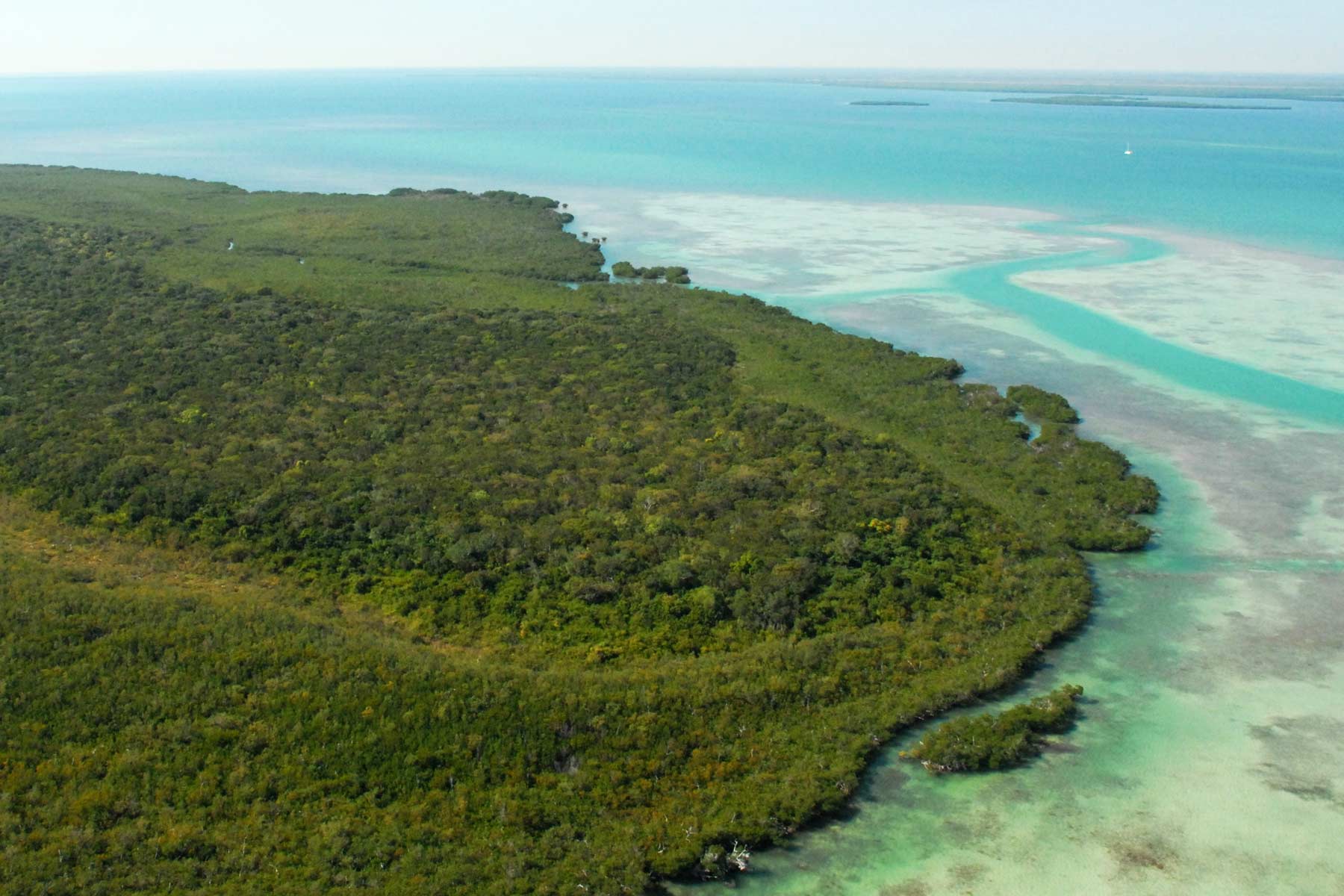
Top 10 Things to Do in Biscayne National Park
10. Hike the Length of Elliott Key
The longest trail in Biscayne National Park has some edgy history. A roughly seven-mile hike along the full length of Elliott Key—northernmost of the major coraline Florida Keys, and the biggest island in the park—follows the track of the so-called “Spite Highway.”
Developers behind the proposed City of Islandia rather obnoxiously bulldozed this six-lane-wide cut down the key—which they dreamed of connecting to the mainland via a dredged channel and building up with hotels and such—in an attempt to stymie the creation of Biscayne National Park.
Fortunately, Elliott Key did indeed fall under the protection of a national park and thus escaped conversion into a cluttered extension of Miami. Running north and south from the key’s campground, linking Sand Cut and Caesar Creek, Spite Highway now draws visitors looking to truly immerse themselves in the Biscayne backcountry. This ramble is easily one of the best things to do in Biscayne National Park for nature lovers.
Suitably protected from the blazing sun (and the over-eager mosquitoes—you’ve been warned), you’ll marvel at the depths of the buttonwood forests and maritime tropical hardwood hammock shouldering the trail—and the views out over the Atlantic and Biscayne Bay available from shoreline vantages reached by spur paths.
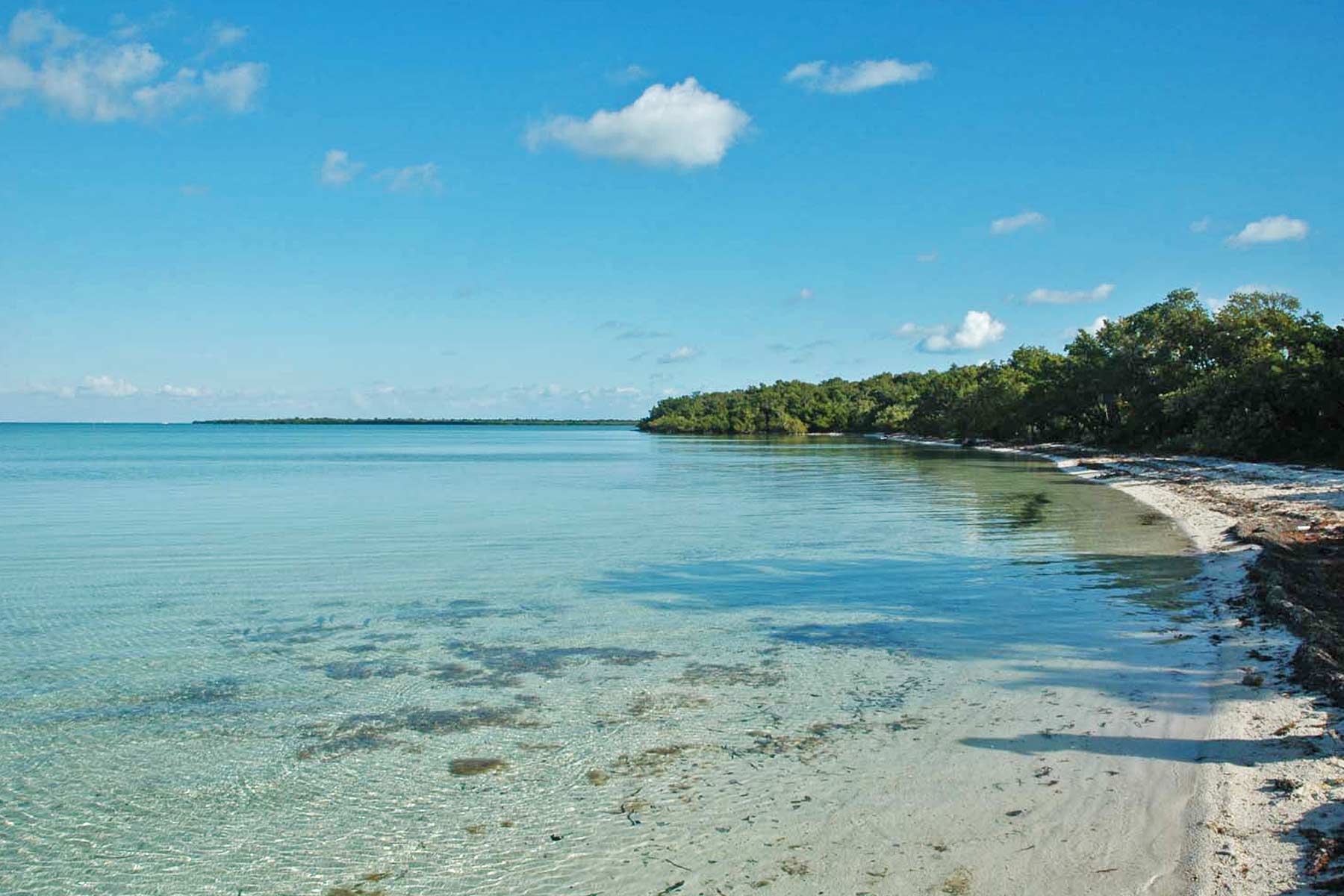
9. Look for Biscayne’s Gentle Giants: Manatees
Who doesn’t love manatees? They’re essentially the aquatic version of a giant panda: in other words, universally beloved. Ranking high up there among things to do in Biscayne National Park is spotting one of these rotund, wrinkly, whiskered, 100% endearing marine mammals.
Florida lays claim to a globally important population of the West Indian manatee, the biggest of all the world’s sirenians or “sea cows”: gentle, slow-moving, herbivorous creatures that (somehow) are thought to have inspired the legend of mermaids.
You could spot a manatee just about anywhere and anytime in Biscayne. That said, the animals more often frequent local waters during the winter, and are generally (and conveniently) most readily seen along the waterfront near the park visitor center.

8. Walk the Convoy Point Jetty Trail
If you’re strapped for time, or want an educational introduction to this special place on the rim of Florida, the Convoy Point Jetty Trail is one of the best things to do in Biscayne National Park.
This self-guided interpretive path, a 0.8-mile round-tip out-and-back, traces a scenic jetty on the mainland near the park’s visitor center. From the mangrove lushness in the foreground to the long views out over Biscayne Bay to the northernmost frontier of the Florida Keys, this easy gravel and boardwalk trail eases you into the park’s seascape ambience.
Biscayne National Park’s most arresting scenery may lie below the water’s surface along its coral reefs, but we think the striking contrast visible from the Convoy Point Jetty Trail—from the highrises of the Miami skyline to the wild green keys saved from paving-over—makes for a pretty remarkable viewshed.
7. Check Out Biscayne’s Superlative Feathered Roster (aka Go Birdwatching!)
Biscayne’s one of the first-class destinations in the U.S. for birding, bar none. The rich habitat mosaic and geographic position of the park ensure a diverse roster of seasonal migrants, summertime nesters, wintertime snowbirds (literally), and year-round residents. And its proximity to the Caribbean means all manner of rare or vagrant tropical West Indian and Latin American birds sometimes show up.
From mangrove cuckoos and Cuban golden warblers to roseate spoonbills, white ibises, magnificent frigatebirds, and the odd American flamingo—oh, and brown pelicans, swallow-tailed kites, royal terns, white-crowned pigeons, ospreys, turkey and black vultures, and so much more—you’re sitting pretty in the feathered-friends department here along Biscayne Bay.
Whether you’re a dyed-the-wool birder (with a life list and the whole shebang) or just a garden-variety nature buff—or, heck, anybody who appreciates the beautiful things of this world—birdwatching is another of the best things to do in Biscayne National Park.
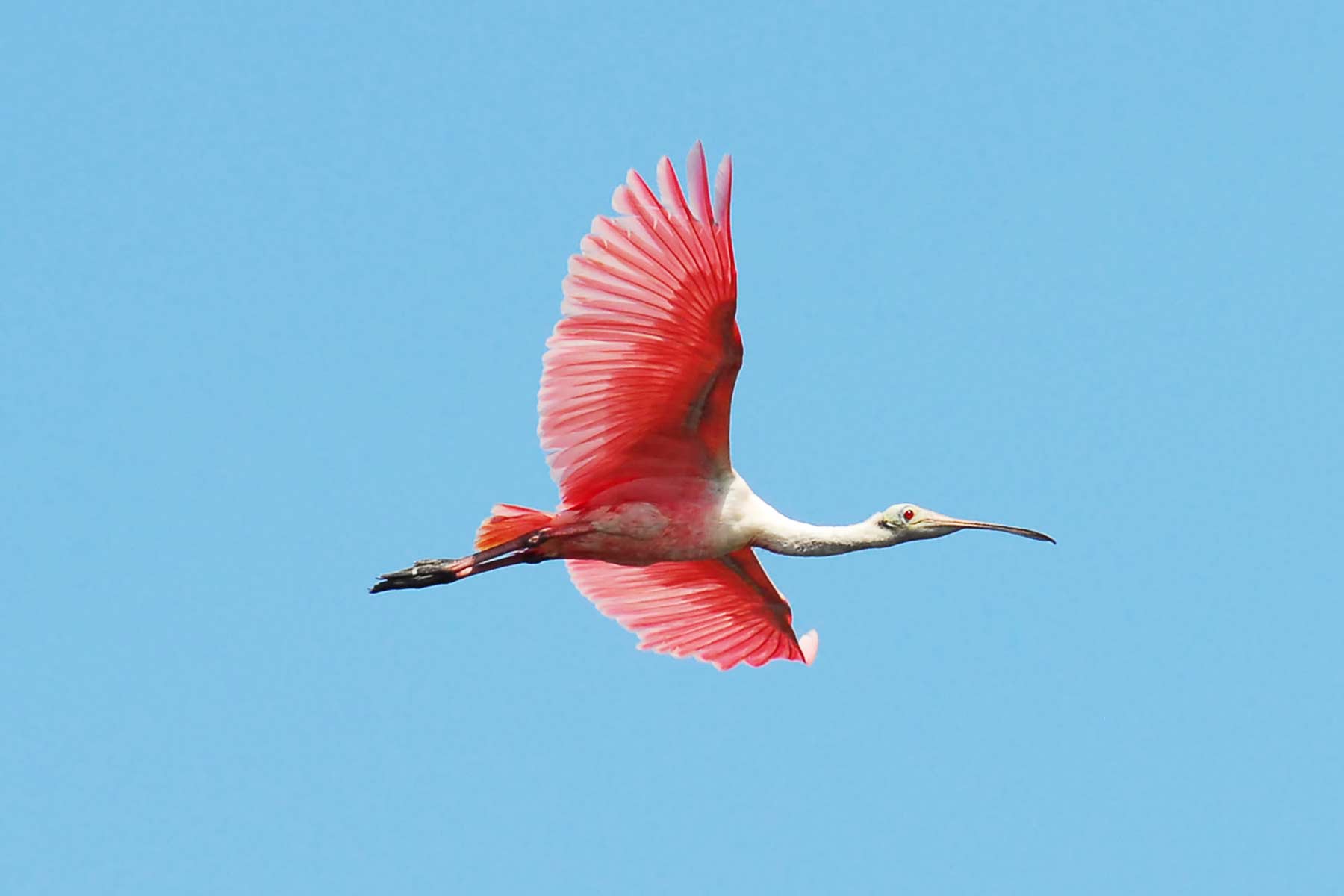
6. Visit Boca Chita Key’s Lighthouse
A 65-foot-tall ornamental lighthouse is Boca Chita Key’s defining architectural feature. One of the no-brainer things to do in Biscayne National Park for any shutterbug is visiting this little isle north of Sands Key via private boat or guided tour, and appreciating the lighthouse firsthand.
Built in the late 1930s by former island owner Mark Honeywell, the concrete and limestone lighthouse casts a handsome figure along the harbor, on the palm-dotted tip of Boca Chita Key: a quintessential Biscayne sight to capture, not least during magic hour.
But if park employees are around, you can also access the structure’s awesome observation deck, which serves up homerun panoramic views: north beyond the Ragged Keys to Key Biscayne (southernmost of the U.S. Atlantic Seaboard’s great barrier islands), out to the skyline of Miami, and across vast reaches of bay and ocean.
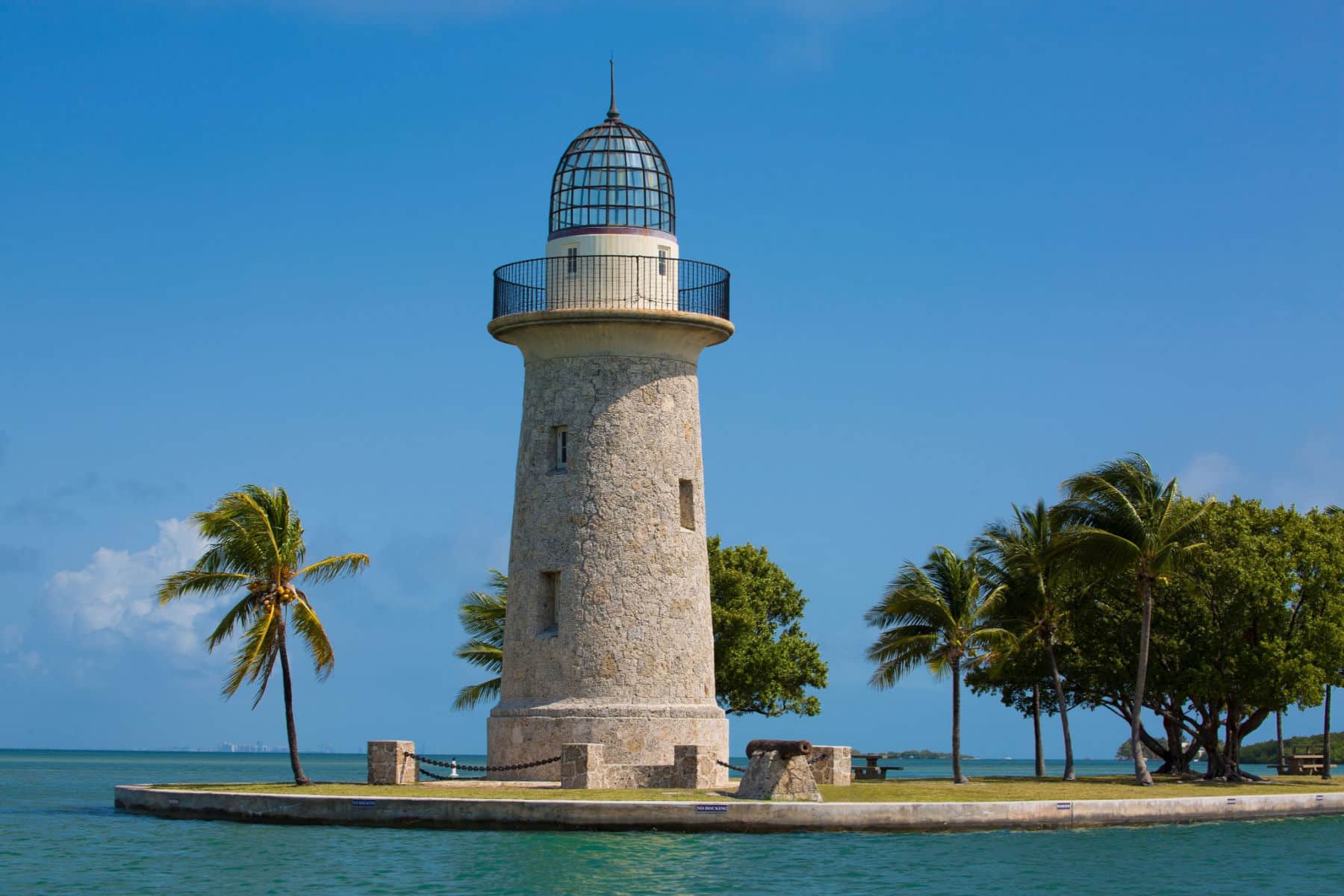
Top 5 Things to Do in Biscayne National Park
5. Paddle Jones Lagoon
A remote, mangrove-ringed jewel between Totten and Old Rhodes keys, Jones Lagoon is a premier Biscayne paddling destination. Most visit via a guided boat tour, anchoring outside the lagoon and paddling in, but strong and adventurous canoers/kayakers might consider muscling out on their own across Biscayne Bay.
While kayaking Jones Lagoon is fine and all, we’d say stand-up paddleboarding’s just as good. The calm, clear, shallow waters are ideal for beginners, and you can’t beat the top-down perspective, which will hopefully yield a sighting or two of some of this subtropical waterway’s sealife.
Keep your eyes peeled for tropical fish, southern stingrays, upside-down jellyfish, and pintsized nurse and blacktip sharks (Jones Lagoon happens to be a shark nursery).
Throw in a good chance of seeing roseate spoonbills—a downright ravishing-looking bird—and there’s no question a little quality time aboard a SUP on Jones Lagoon is among the most rewarding things to do in Biscayne National Park.
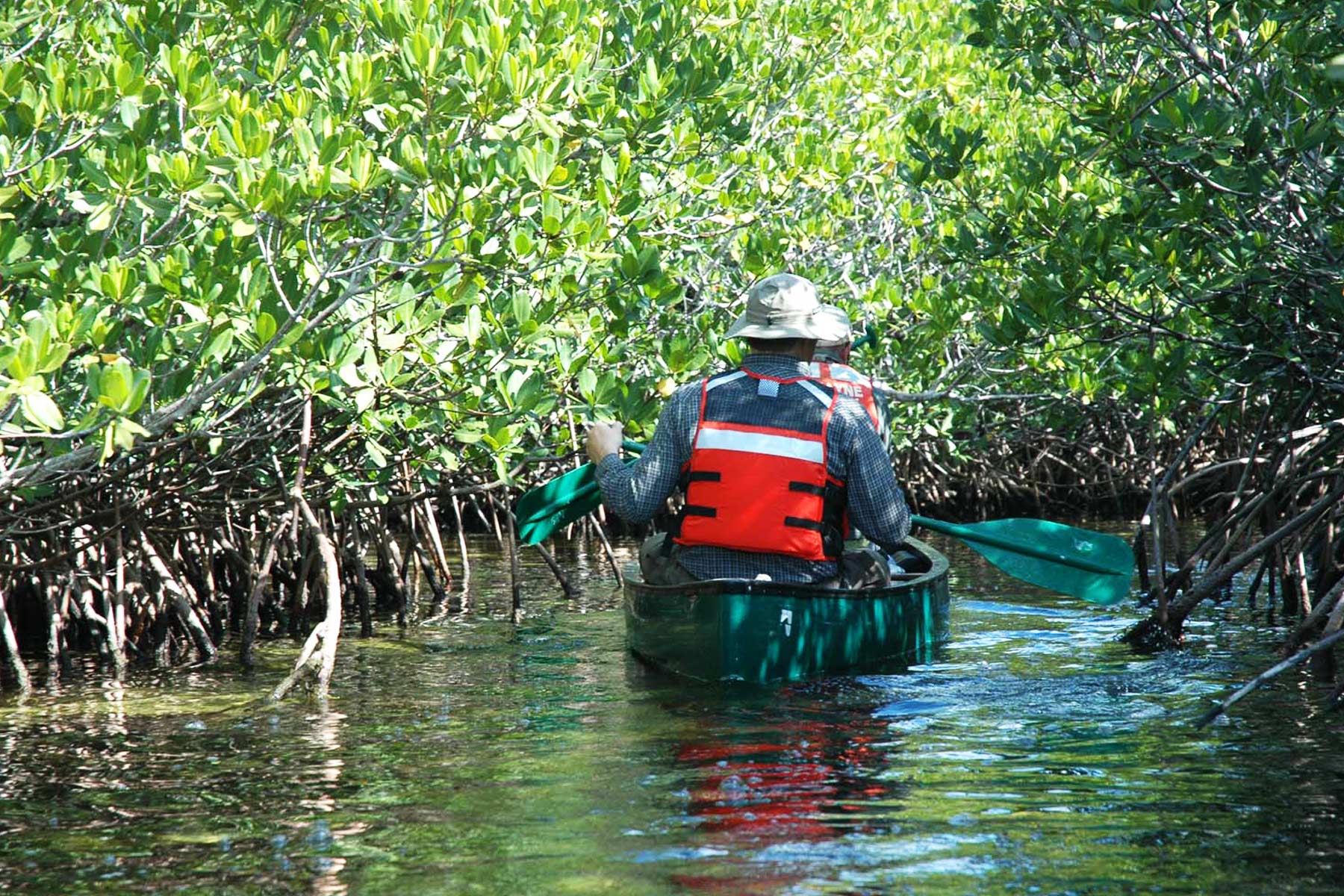
4. Go Offshore Camping a Stone’s Throw From Miami
Camping options are limited—but noteworthy—in Biscayne. There are two campgrounds in the park: one on Boca Chita Key, the other on Elliott Key. Only accessible by boat, the recreation sites give you the option to tent out against beautiful skylines: Biscayne Bay, in the case of the Elliott Key Campground, and, on Boca Chita, the wide-open Atlantic.
Boca Chita Key’s the most-visited island in Biscayne National Park. Its grassy campground includes picnic tables and grills; there are toilets, but no other facilities (and no drinking water). Along with its own picnic tables and grills, Elliott Key Campground has restrooms outfitted with sinks and cold-water showers, and does have drinking water—although the Park Service recommends bringing your own backup supply, just in case.
Overnighting at one or the other of these campgrounds on these northernmost of the Florida Keys—one of the best things to do in Biscayne National Park—is first-come, first-served.
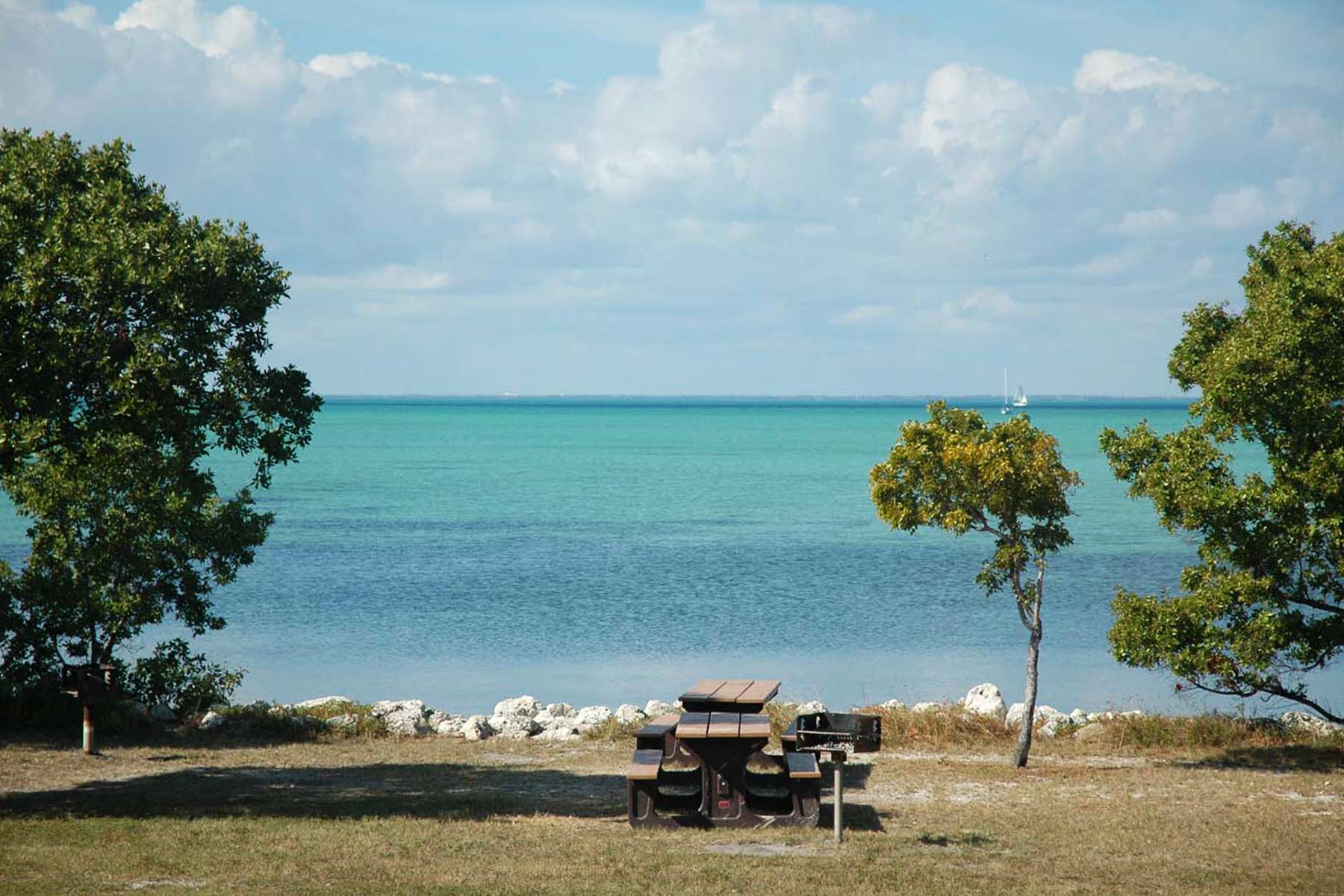
3. Get Underwater on Biscayne’s Maritime Heritage Trail
Coral reefs (more on them shortly) aren’t the only underwater attraction in Biscayne National Park. Some remarkable shipwrecks also spice up the marine scenery. Exploring the Maritime Heritage Trail—only reachable by boat—ranks among the most enthralling things to do in Biscayne National Park.
Six marked wrecks stud its course. Some—such as the 112-foot, steel-hulled schooner Mandalay, foundered on Long Reef in 1966—lie in shallows easily explored by snorkelers. Others are best suited to divers. Those include the Lugano, a 350-foot-long, 3,770-ton Liverpool-based steamer that wrecked on Long Reef in 1913 while en route to Havana—at the time, the biggest shipwreck on a Florida reef.
Then there’s the Erl King, a three-masted 19th-century British steamship that survived running aground on Tennessee Reef—farther south in the Florida Keys—in 1881, only to meet its end on Long Reef 10 years later.
The Maritime Heritage Trail also encompasses the “Eye of Miami”: the Fowley Rocks Light, first lit in the summer of 1878 (the steamer Arratoon Apcar, which can be snorkeled or dived, actually wrecked within view while the lighthouse construction was underway) and still doing its thing today.

2. Paddle Biscayne Bay
One of the top things to do in Biscayne National Park is getting out on the expansive shallows of Biscayne Bay in a paddlecraft. From the mangrove-walled coastlines to the wide-open seagrass realm offshore, there’s no better portal into the watery wilderness that defines so much of this park.
You can launch a kayak or canoe from islands such as Boca Chita, Elliott, and Adams keys. The mainland reach of the park includes a number of good launches, not least the park headquarters at Convoy Point and, to the north, the Black Point Jetty.
Indeed, if you’ve arranged a shuttle, you might consider paddling between Convoy and Black points, watching for birds, crocs, and manatees along the green wall of the mangrove shore and trying to glimpse a tarpon or sawfish farther out.
If you’re not into the self-guided paddling option, no worries: You’ve got numerous choices for guided paddling tours in the national park.
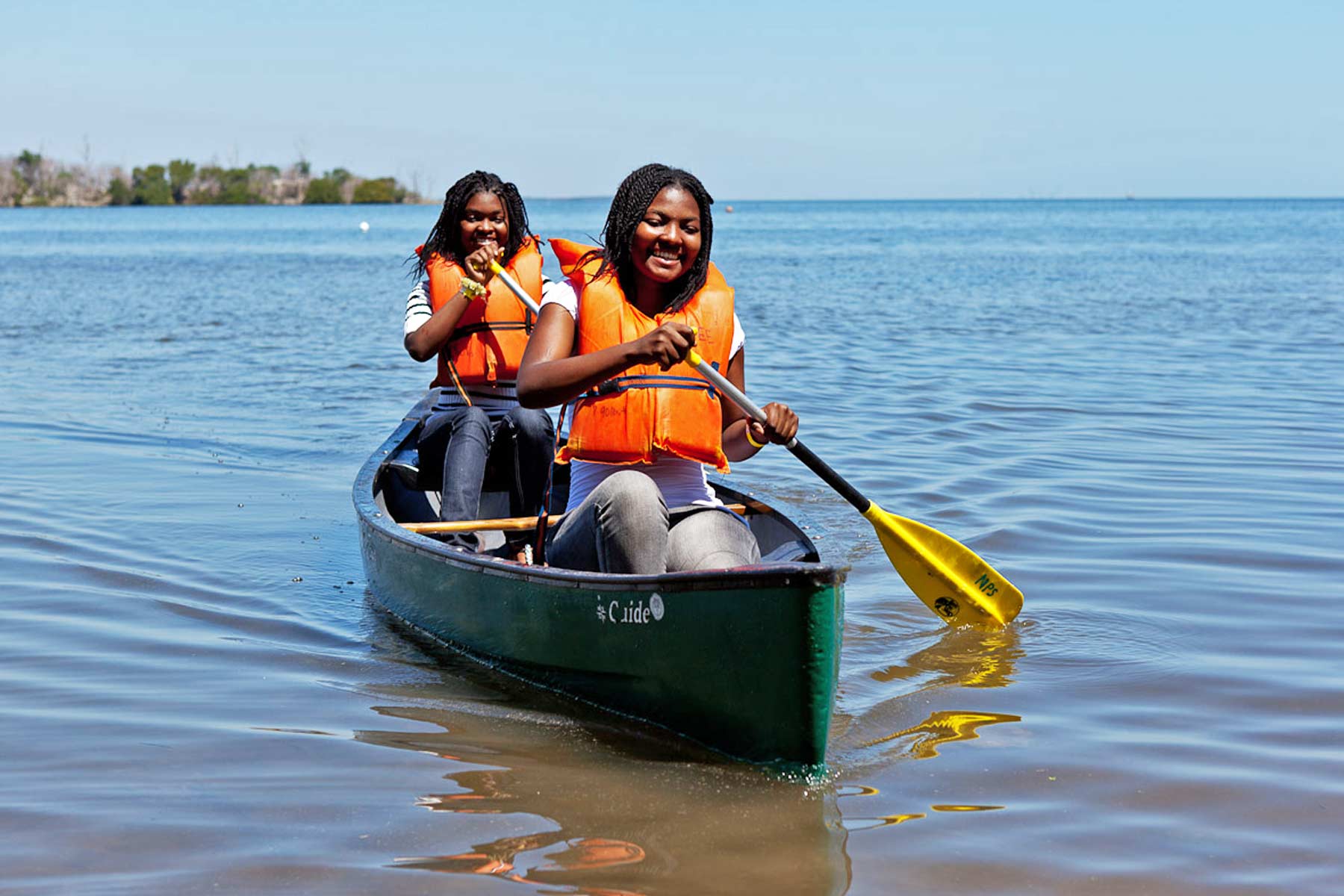
1. Snorkel or Dive the Coral Gardens
The most all-around spectacular feature in Biscayne National Park is the Great Florida Reef, also known as the Florida Keys Reef Tract, the only major coral reef along the coast of the contiguous U.S. and among the most significant of its kind in the Americas.
It stretches better than 350 miles from the Dry Tortugas in the southwest to the St. Lucie Inlet along South Florida’s Atlantic coast, and Biscayne thus lies in the heart of it.
Biscayne’s portion of the reef encompasses the Key Largo Limestone, and its coral gardens—festooned with everything from sea fans and brain corals to some of North America’s healthiest populations of elkhorn coral, and drawing loads of sealife, from groupers to sea turtles—are a joy to explore. (And, needless to say, one of the best things to do in Biscayne National Park.)
Both snorkeling and diving are possible, though you’ll need a boat (your own or a charter company’s) to access the park’s stretch of reef. While there are some deeper dive-only reef sites, such as Sponge Fantasy, many sites are snorkeling-friendly, including Rocky Reef, Elkhorn Reef, and Bache Shoal.

Map of Things to Do in Biscayne National Park
Summary of Things to Do in Biscayne National Park
- Snorkeling/Diving
- Paddle Biscayne Bay
- Maritime Heritage Trail
- Offshore Camping
- Paddle Jones Lagoon
- Boca Chita Key
- Birding
- Convoy Point Jetty
- Manatees
- Hike Elliott Key
- Plant Biodiversity Tour
- Learn About Pirate History
- Saltwater Fishing
- American Crocodile
- Visitor Center
Pin Things to Do in Biscayne National Park
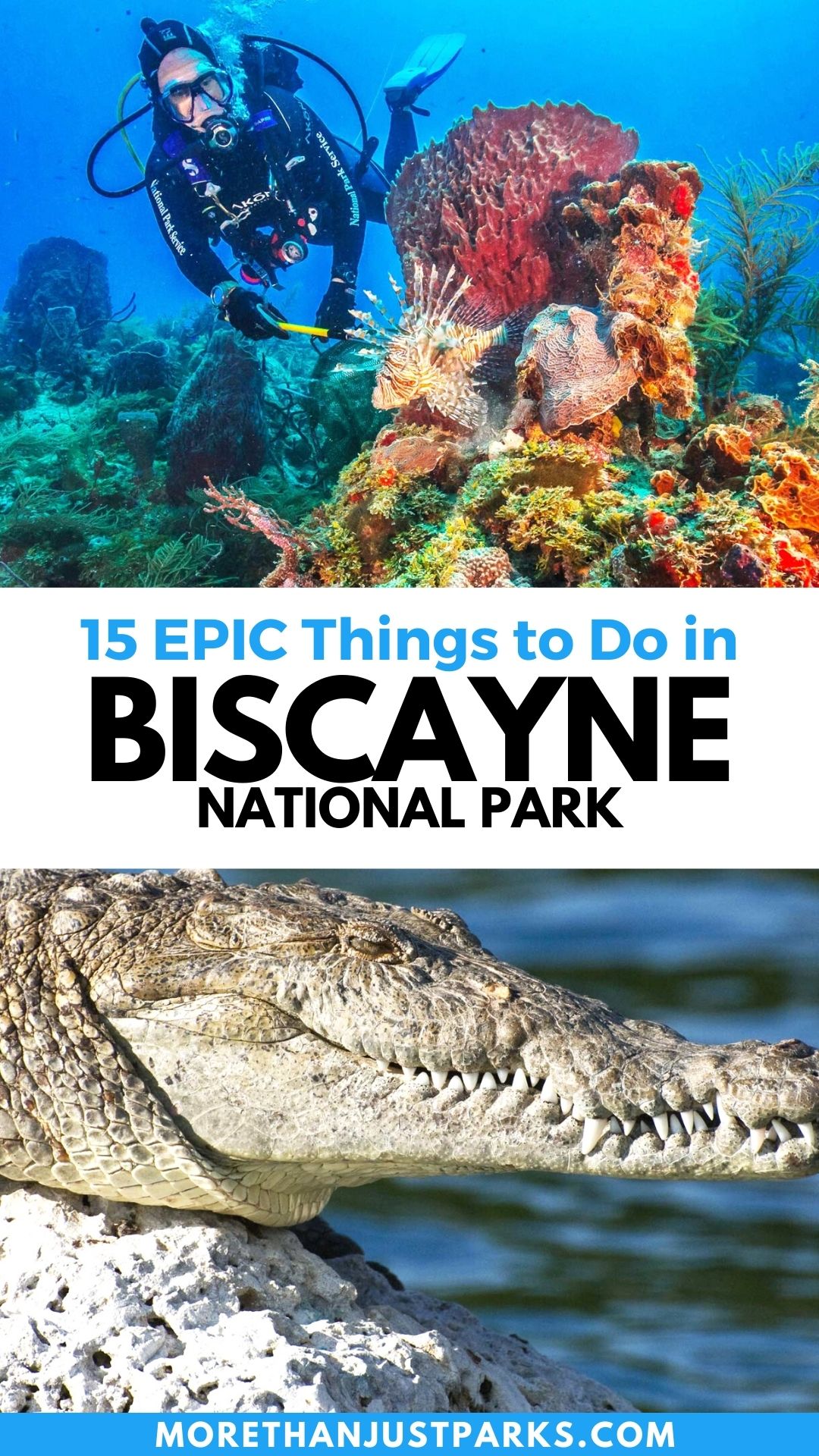
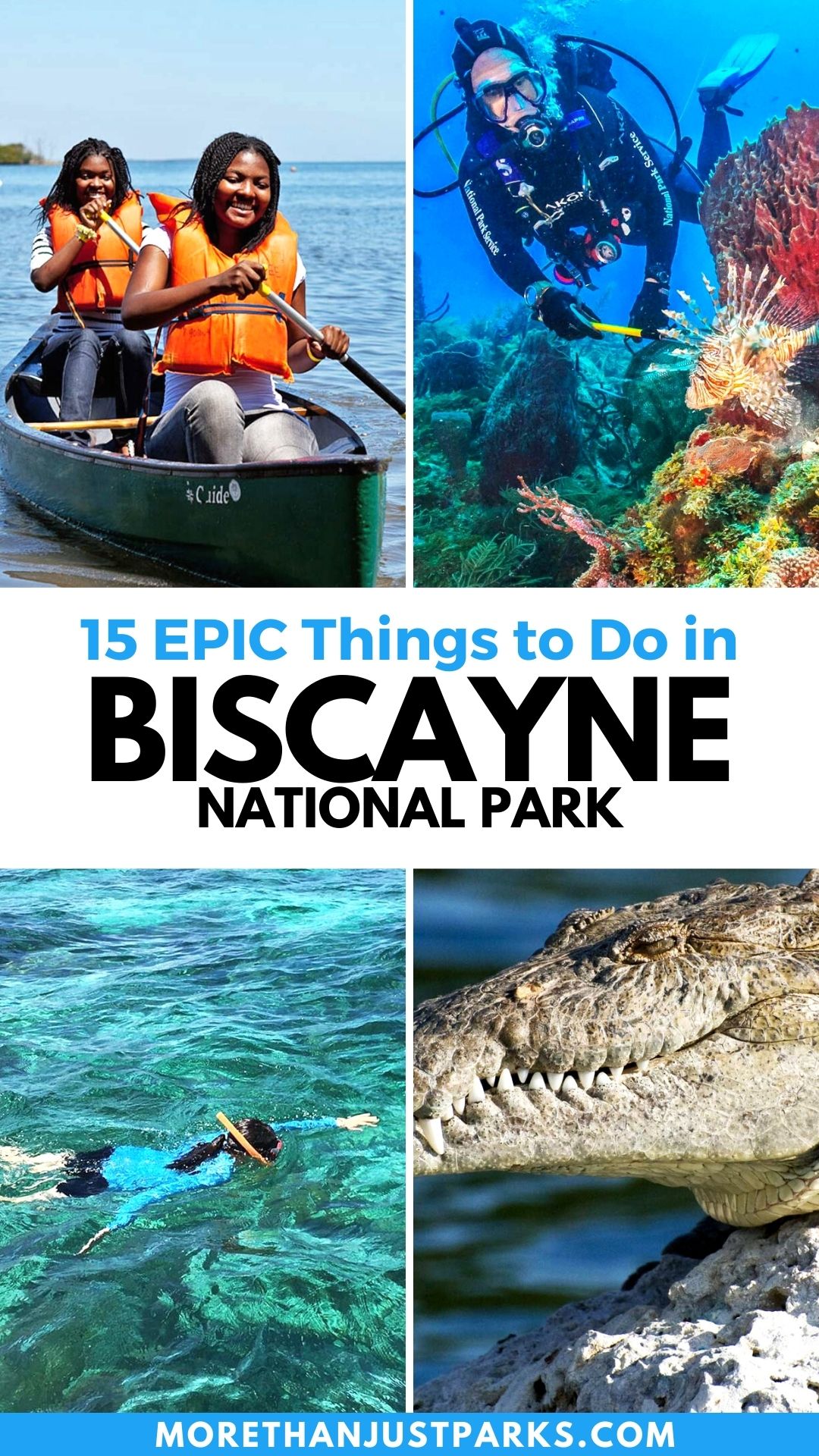
Helpful Related Articles
Florida National Parks: 11 Epic Florida National Parks Worth Visiting
Things to Do Everglades: 20 Epic Things to Do in Everglades National Park
Things to Do Biscayne: 15 Epic Things to Do in Biscayne National Park
Biscayne Facts: 15 Amazing Biscayne National Park Facts
Everglades Facts: 11 Interesting Facts About Everglades National Park
National Parks Near Tampa: 9 Amazing National Parks Near Tampa
National Parks Near Miami: 5 Amazing National Parks Near Miami
Overseas Highway Road Trip: Miami to Key West Drive: Everything You Need to Know
Best East Coast National Parks: Top 10 Best East Coast National Parks Ranked
National Parks Ranked: ALL 63 US NATIONAL PARKS RANKED By Experts
Most Visited National Parks: Top 10 Most Visited US National Parks
Georgia National Parks: 10 Amazing Georgia National Parks Worth Visiting
South Carolina National Parks: 8 Epic South Carolina National Parks Worth Visiting
National Parks Road Trip: 10 EPIC National Parks Road Trips (Expert Guide)
Cheapest Cities to Live in Florida: 15 Cheapest Places to Live in Florida


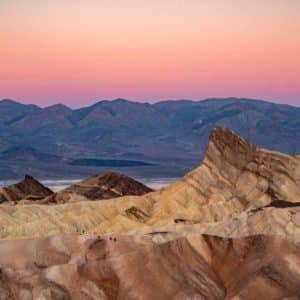

Leave a Reply